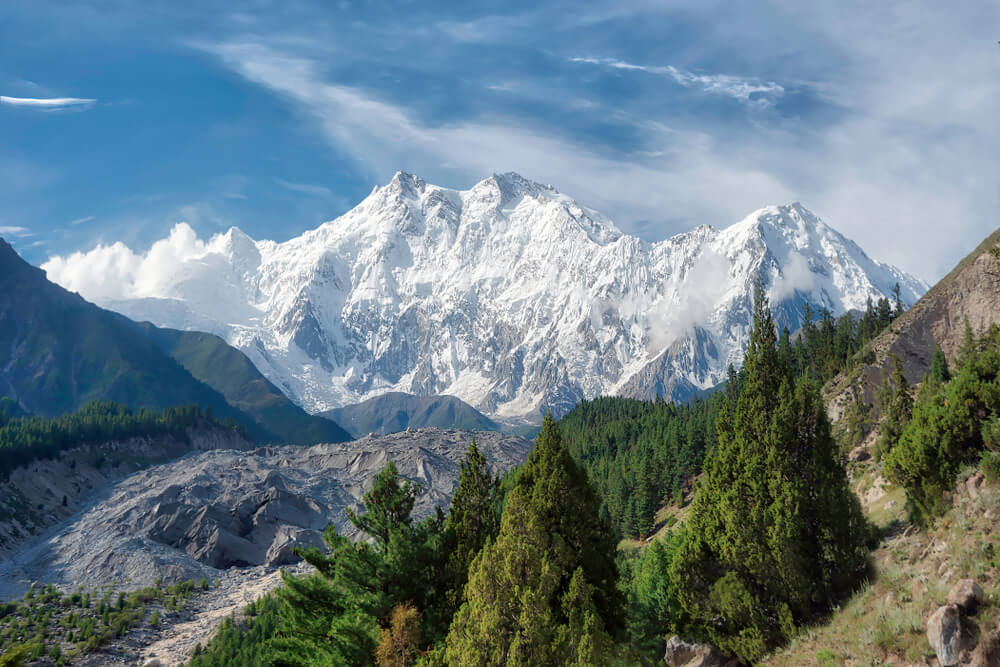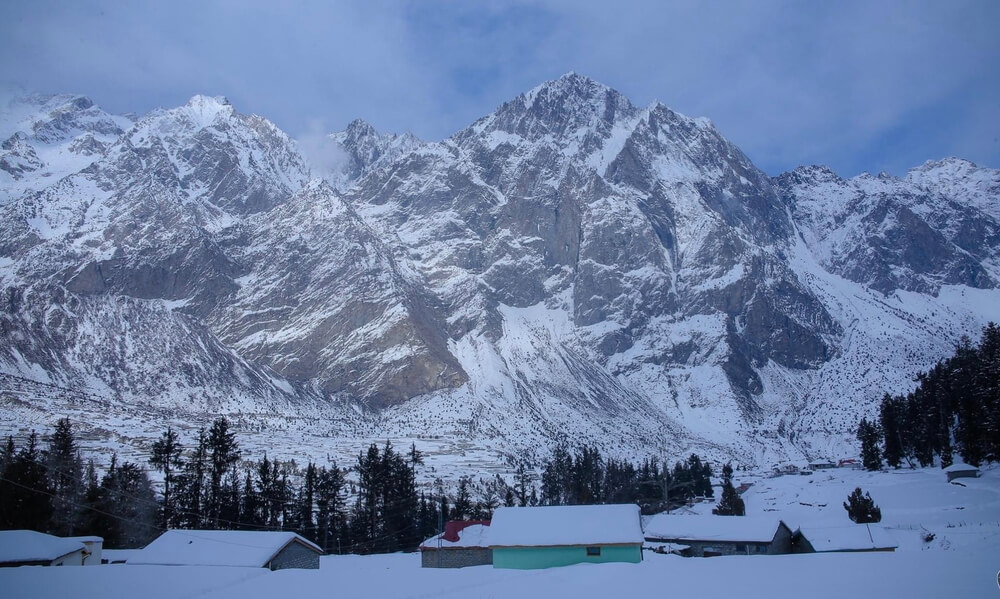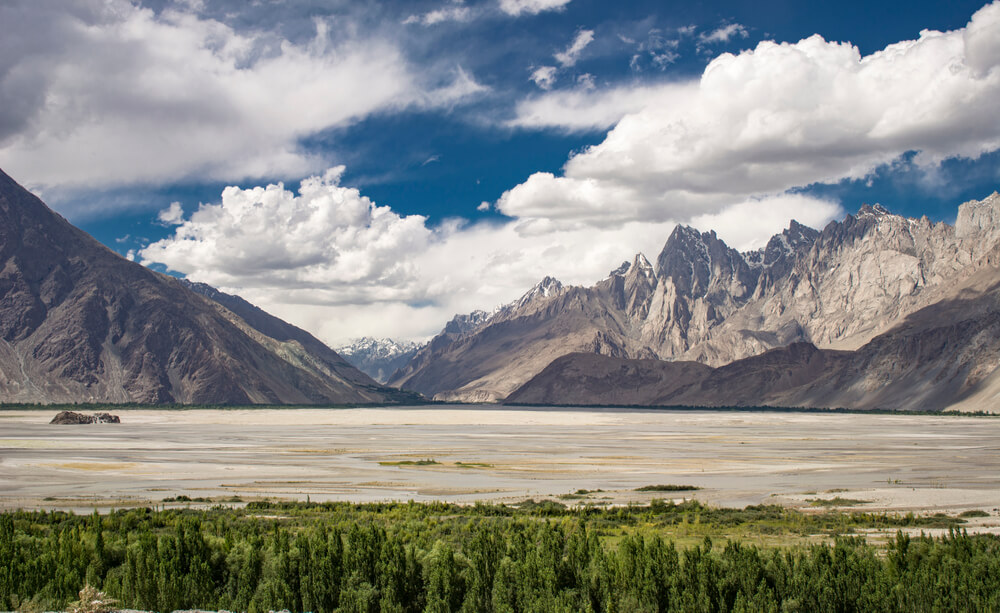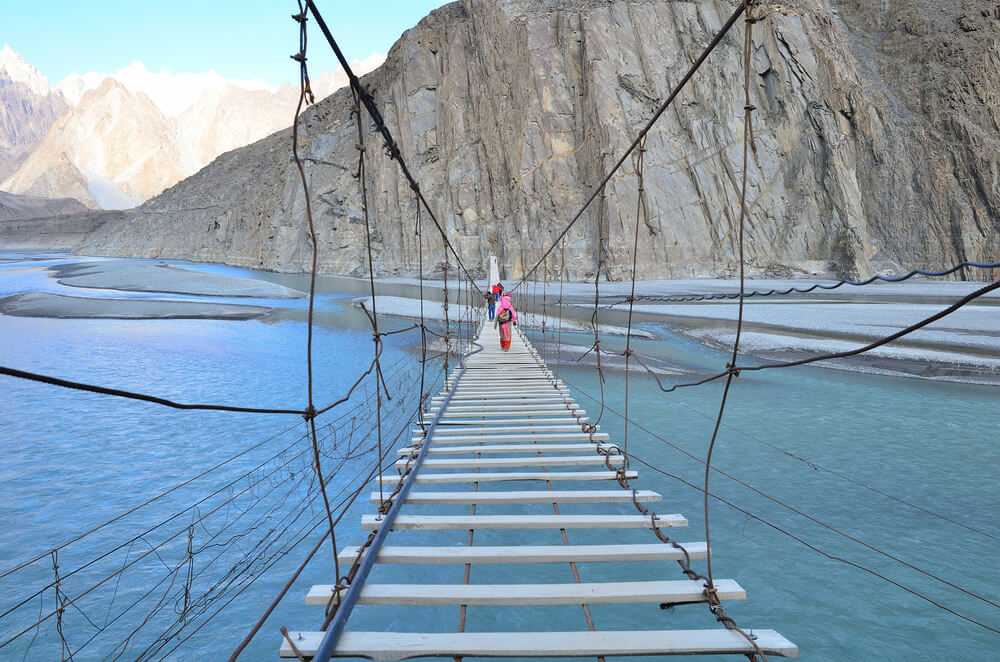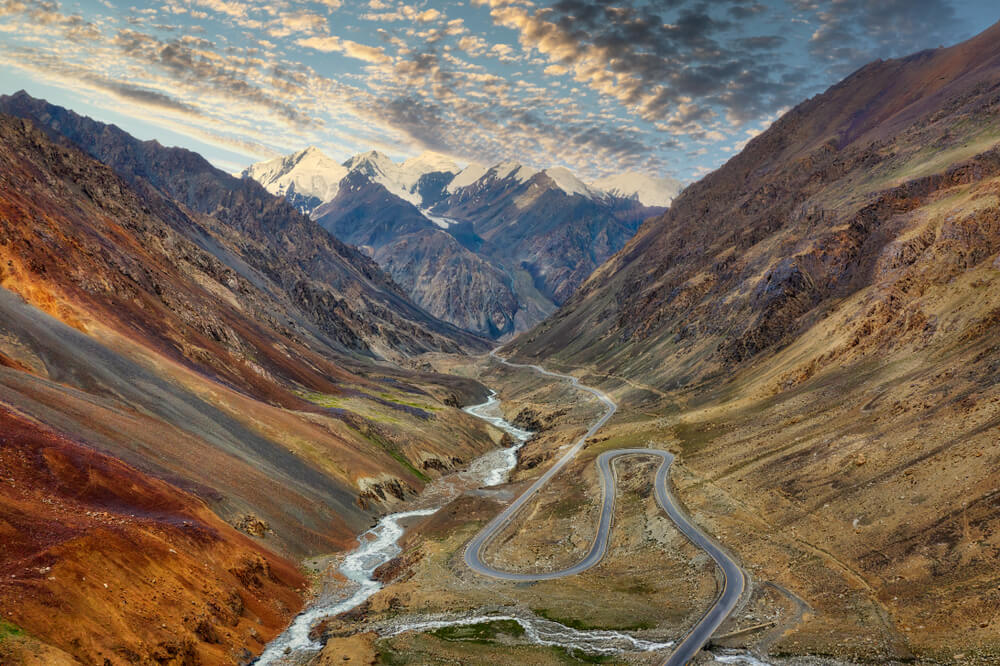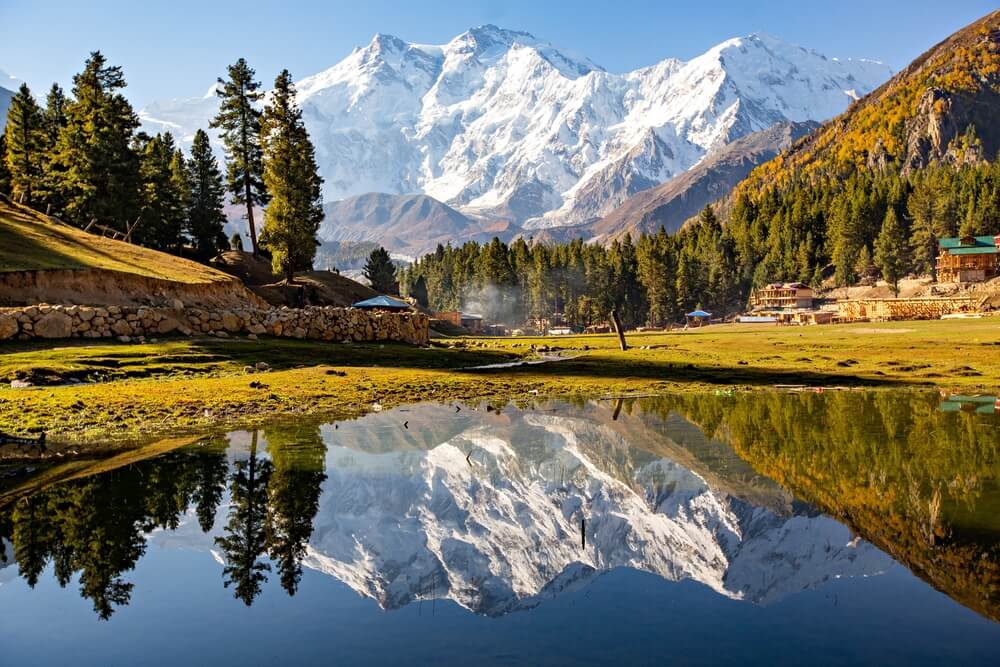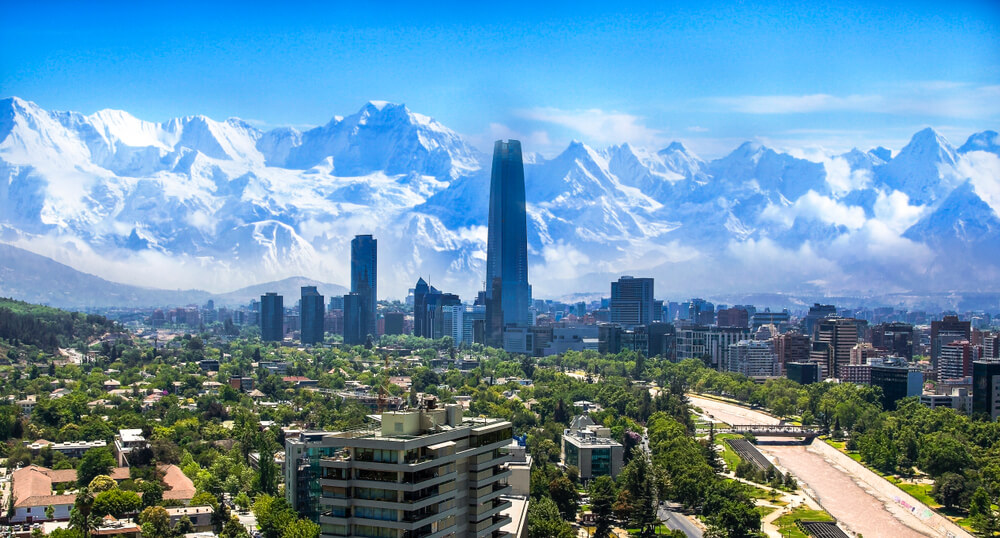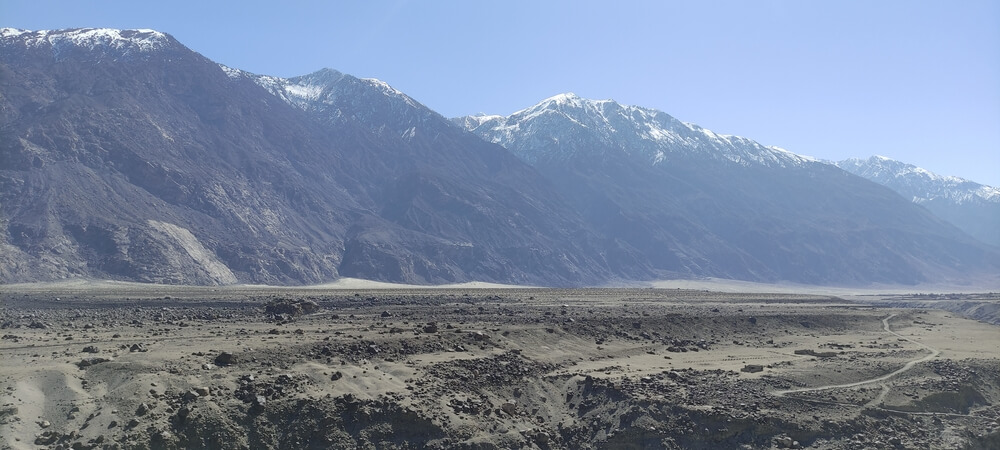Gilgit Baltistan
Among many other beautiful areas, Gilgit Baltistan is the northernmost area in Pakistan, rich in scenic beauty and culture. It has an autonomous status in Pakistan, and its people have a unique culture and traditions, which outsiders love!
For those who don’t know that Gilgit has semi-provincial status, let me tell you its administratively divided into three divisions; Baltistan, Gilgit, and Diamer. And each division is then divided into several districts. The area of Gilgit Baltistan is about 72,971 sq km.
The people here are very hospitable, and you will find a majority of Shia Muslims with a substantial number of Sunni Muslims, Ismaili, Hindus, and Christians. Gilgit Baltistan is also home to many tourist attractions, such as Shandur Pass and Jaglot.
Talking about the climate, it has an extreme continental climate with long, cold winters and short, cool summers.
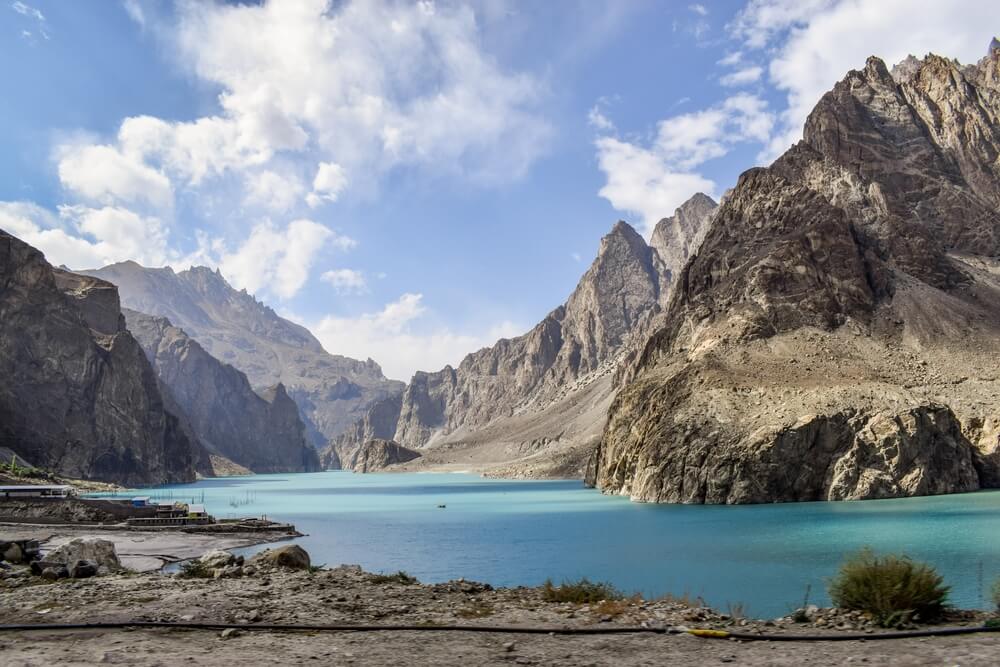
This place is full of natural beauty, and there are plenty of places you can visit here, like Skardu, Deosai National Park, Karimabad, etc.
If you are planning to visit Gilgit Baltistan, then make sure to pack some warm clothes as the temperature can go below freezing point during winter.
Gilgit Baltistan is a unique region to explore, with a unique language and many activities to enjoy; you’ll be amazed by the beauty of this place!
So, if you want a place to enjoy peace and tranquility, then Gilgit Baltistan is the perfect place for you!
History of Gilgit Baltistan
This region, known as Gilgit Baltistan, was formerly named Federally Administered Northern Areas (FANA). It’s the northernmost political entity within Pakistan and has a very detailed history which you’ll be excited to learn about.
The region has been occupied by various empires and dynasties throughout its history. Before its independence, the area of Gilgit Baltistan was once a part of Jammu and Kashmir, a princely state of India.
Due to rivalry, India doesn’t recognize it as a part of Pakistan and still classifies it as a part of Jammu Kashmir. It has increased the already existing conflict between the two countries.
The territory of the currently called Gilgit was recognized as a separate administrative unit in 1970. The name was “Northern Areas,” and the area at that time included the Baltistan district, other princely states like Hunza and Nagar, and Gilgit Agency.
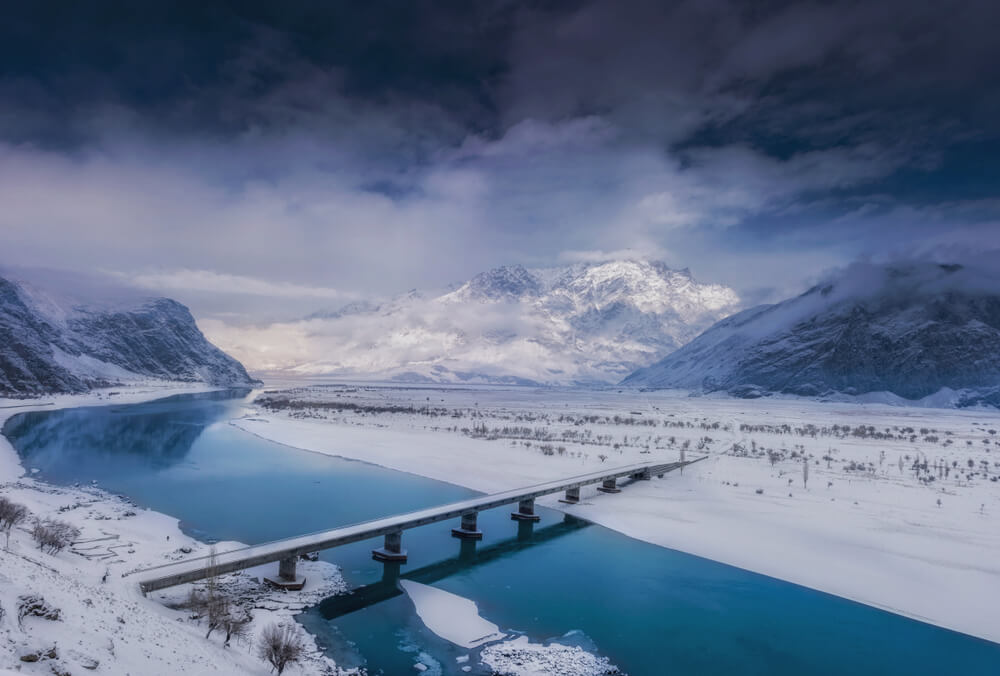
In 2008, this area was renamed Gilgit Baltistan and was given autonomy. The limited autonomy resulted from the self-governance order signed by the former president of Pakistan, Asif Ali Zardari.
Gilgit has been an important trading area for centuries because of its situation on the silk route. The region’s population is 1.249 million, and the capital is Gilgit.
The official languages of Gilgit Baltistan are English, Urdu, Balti, Shina, and Wakhi. However, many other local languages are spoken in different parts of the region.
Gilgit Baltistan Weather
The climate of Gilgit-Baltistan varies from region to region; you’ll experience the different intensities of cold in various areas of Gilgit.
The massive mountain ranges in Gilgit are one reason there are sharp variations in the weather. The eastern part of the region is moist because of the western Himalayas. However, areas near Karakorum and Hindukush face quite a drier climate.
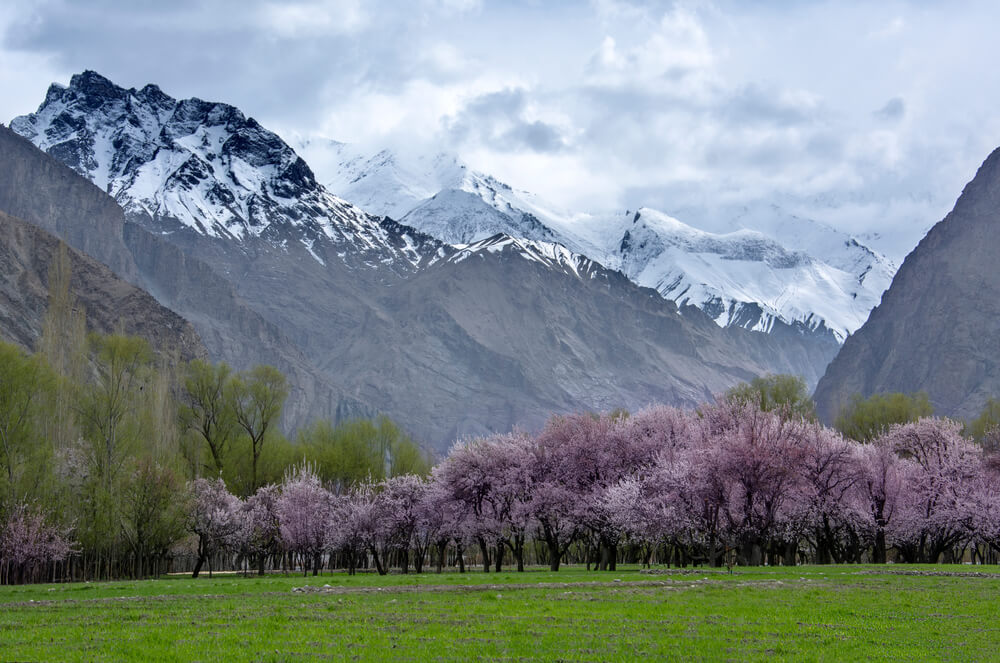
Spring season starts in April and lasts until the third week of June, and the maximum temperature is between 10 and 20 degrees Celsius.
The summer stays until the end of August, and the fall season begins at the end of October. Then, from November to March, there’s the winter season, during which the temperature can drop to -4 degrees Celsius, bone-freezing.
Capital of Gilgit Baltistan
The capital of Gilgit Baltistan is Gilgit. It is the largest city in the region and serves as the base camp for many tourists because of its strategic location.
It is a beautiful city with plenty of things to do and see. The people are friendly and welcoming, and there are plenty of tourist attractions.
There are several places to visit in Gilgit Baltistan, and it is truly a paradise for nature lovers and adventure seekers.
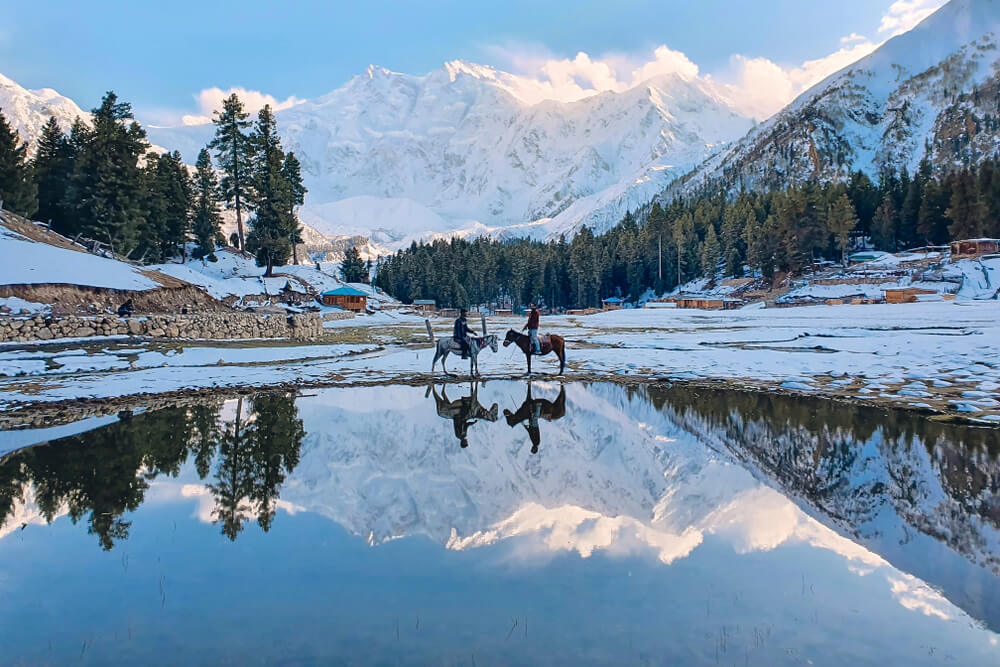
Gilgit once served as a major center for Buddhism and was an important place on the ancient silk road. Currently, it’s a major junction along the Karakorum highway, which connects Pakistan to China.
The area is gaining popularity in tourism with each passing day, and the things adventurers love to do here are trekking and mountaineering in the Karakorum. This city’s economy depends on agriculture; wheat, maize, and barley are the majorly produced crops.
Gilgit Baltistan Area
Gilgit Baltistan covers an area of 72,971 square kilometers. It is a mountainous region and is home to some of the tallest mountains in the world, like K2, Nanga Parbat, and Rakaposhi.
This region has 14 districts and three divisions, the largest city being Skardu.
The region is also home to the world’s highest mountain pass, the Khunjerab Pass, which connects Gilgit Baltistan with Xinjiang in China.
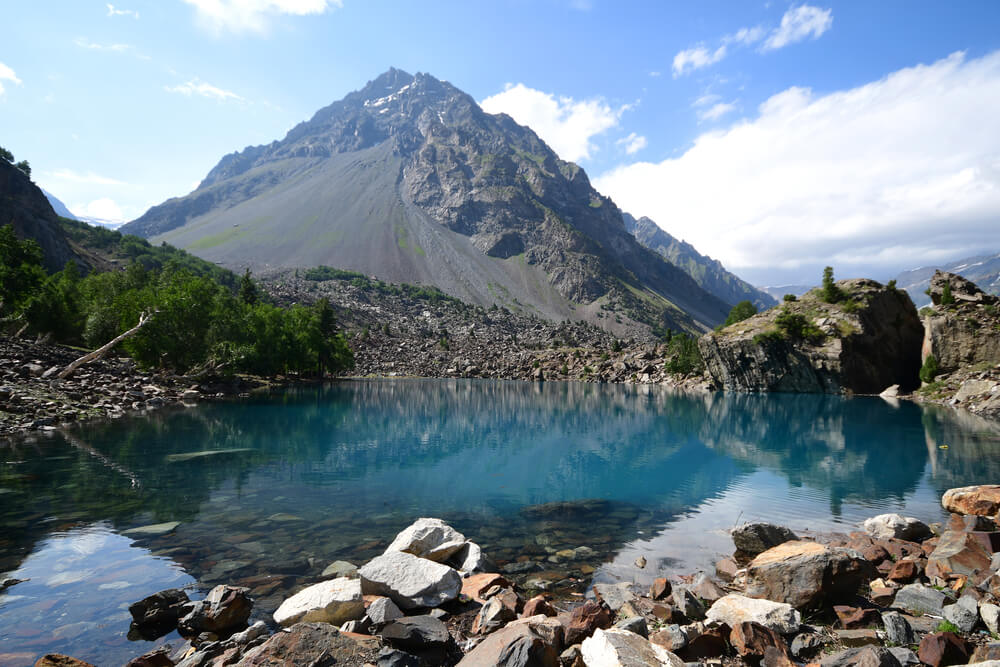
Gilgit Baltistan has a population of 1.249 million, per the statistics 2013. The territory of Gilgit-Baltistan is five times more than the area of Azad Kashmir, pretty much massive enough to include lots of beautiful places!
Districts of Gilgit Baltistan
Gilgit Baltistan is a vast region with 14 districts in total. These are Gilgit, Astore, Diamer, Darel, Ghanche, Ghizer, Hunza, Nagar, Kharmang, Gupis-Yasin, Shigar, Skardu, Roundu, and Tangir.
Previously there were only seven districts, and the number rose to 10 in 2016 when the two districts got added into Baltistan valley and the Hunza-Nagar district bifurcated.
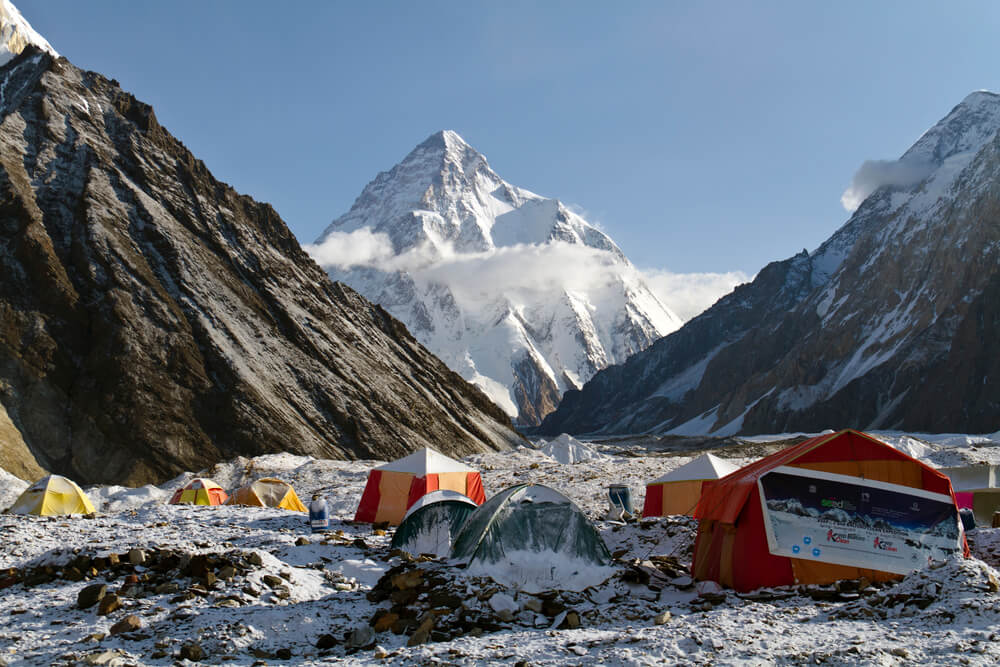
The most recent number of these districts is 14 as of 2021. There are three divisions in Gilgit Baltistan; 5 districts are in the Baltistan division, 5 in the Gilgit division, and 4 in the Diamer division.
Gilgit Baltistan is a landlocked region located in the northernmost part of Pakistan. It borders the countries of china and Afghanistan.
Culture and Traditions
Gilgit Baltistan has a fascinating and elegant culture that Pakistani people adore and tourists love to see. The region is ancient, and the culture of people living here is unique and originates somewhere in extreme antiqueness.
Over the years, Gilgit Baltistan has managed to protect the traditions and customs of the people who are the foundation of the cultural life of Gilgit.
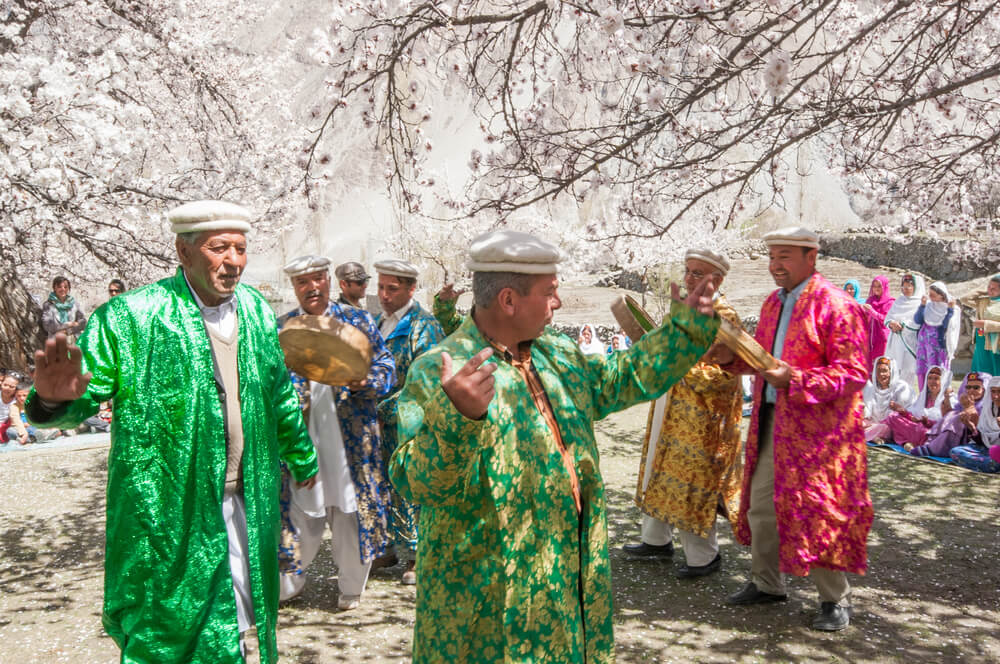
The inhabitants of this region are the people of Tibet and Iran. That’s how this region has an amalgamation of different cultures and various patterns of house-making and lifestyles.
The Baltis are very hospitable, offering their guests the best of everything they have. It is a tradition in Baltistan that whenever a guest arrives, he is given the status of God and is treated well.
Tourists who visit attractions like Skardu, Basho, Attabad, and Hunza feel quite amused and are eager to adopt the Gilgit culture during their stay.
What To Pack?
You must wonder what to pack and wear on your trip to Gilgit-Baltistan. But no worries, we’ve got you!
Gilgit is a freezing place, so you need to pack accordingly. You’ll need lots of woolen and thermal clothes to keep yourself warm. But don’t forget to pack some lightweight garments when traveling in summer because it can be hot during the day.
When planning to visit Gilgit Baltistan, one must keep in mind the following packing tips:
– Pack warm but lightweight clothes as you will be doing a lot of walking and hiking.
– A jacket or a couple of sweaters is a must as the evenings can get chilly.
– Do not forget to pack your sunscreen and lip balm.
– A good pair of walking shoes is a must as you will be hiking and trekking.
– A pair of warm pants or jeans is a must, as you’ll have to keep yourself as warm as possible in the winter.
– Make sure you have your gloves and a warm woolen scarf.
– Don’t forget to pack your camera and binoculars to make the most of your trip!
Traveling to Gilgit-Baltistan, you’ll be packing not only clothes and stuff but also a first-aid kit and some emergency medicines that you might need. That’s because the areas you’ll be traveling to are remote, and you won’t be able to find such stuff there.
So make sure you have your travel first-aid kit, emergency motion sickness relief, hand sanitizer, and the covid vaccination certificate.
When to Visit Gilgit Baltistan, Pakistan?
It can be a tricky question when one should visit Gilgit-Baltistan. But no worries, you can see this place any time of year (unless the roads are blocked due to snow in winter). Every single day in Gilgit-Baltistan has its charm and beauty.
It depends on your taste and expectations when you want to come here. First, let’s look at how GB’s different seasons are welcomed.
Spring Season in Gilgit-Baltistan
Spring blossoms in Gilgit begin in April and end in May every year. It’s like a sunrise after a long period of darkness in winter.
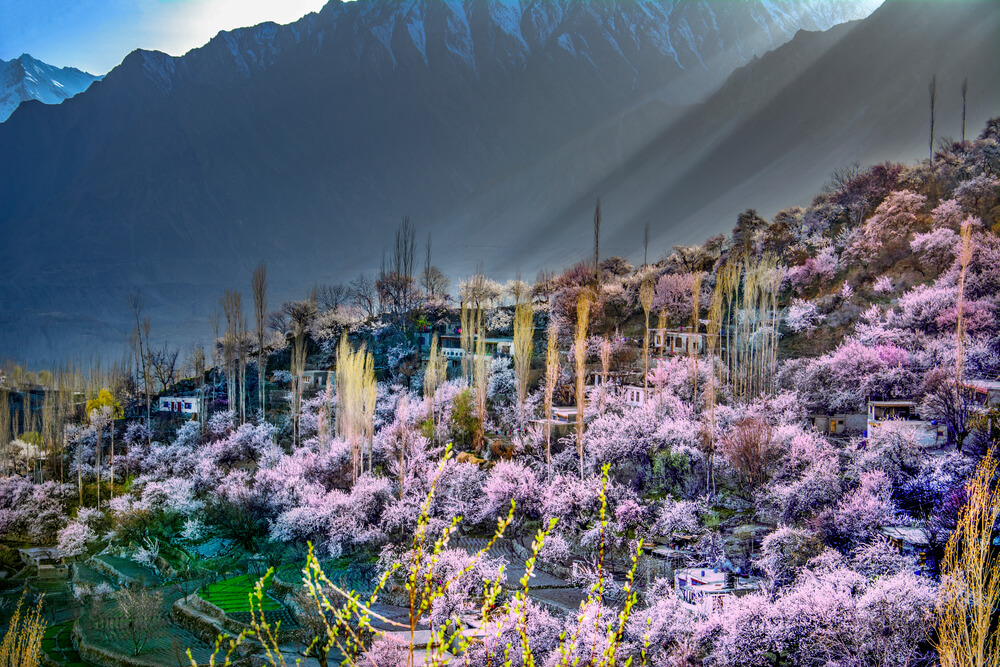
The combination of different colored flowers and snow-covered mountains is a sight to behold!
Autumn in Gilgit Baltistan
Autumn in Gilgit-Baltistan brings a vibrant and chic color palette as the mountains are covered in bright yellow leaves. It looks like heaven’s scenery which is more picturesque than any other season. The season begins in October and continues till mid of November every year.
Winters in Gilgit Baltistan
This one is the harshest season in Gilgit, with a temperature of about -10 degrees Celsius, but it has its perks. The snow-capped mountains and valleys look ethereal, and the frozen lakes are a sight to behold. One of the most famous valleys is located in Khaplu.
If you’re an adventure seeker, this is the best time to go trekking, climbing, and skiing in the region, as all these activities require a lot of snowfall. It begins in November and extends up to February.
Summers in Gilgit Baltistan
Each season in Gilgit-Baltistan has its specific beauty, as do the summers. In the summer, lush green landscapes and trees are full of freshly grown organic fruits.
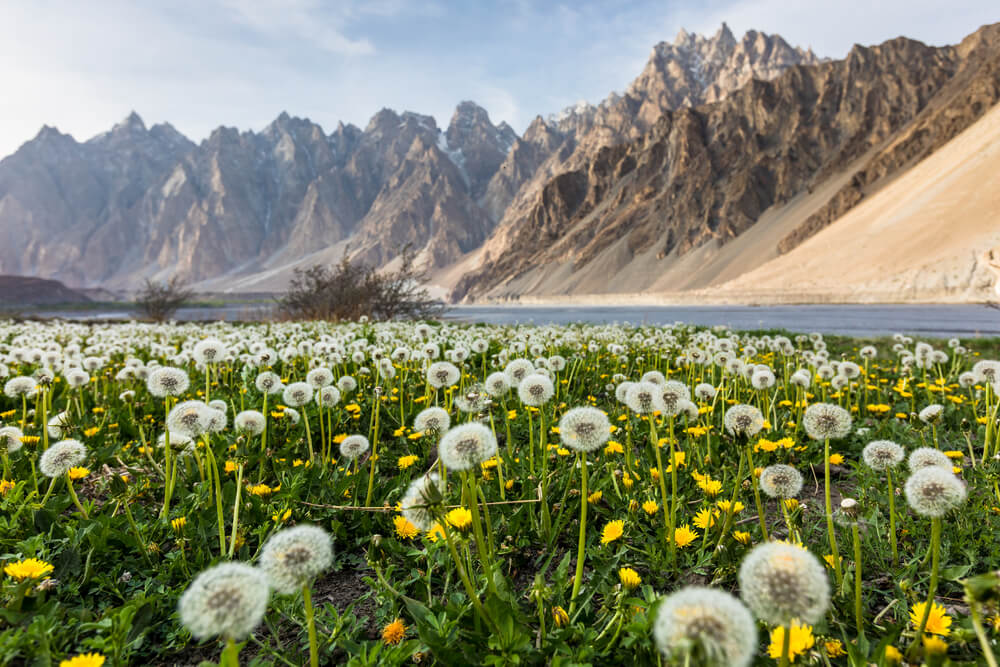
But, because of the high temperatures, the waterfalls and lakes are in full swing. So, if you want to beat the heat, head towards these water bodies and enjoy quality time.
Things to Do in Gilgit Baltistan
There’s no shortage of fun and activities when you’re in Gilgit Baltistan; everything you’ll do will be saved in your memories for a lifetime. Let’s take a look at some of the many things you can do in this beautiful place:
Hike to The Utterly Beautiful Mountains
Gilgit-Baltistan offers some of the best hikes in the world. Some peaks and summits provide stunning views, so if you’re a fan of hiking, you’ll be spoilt for choice.
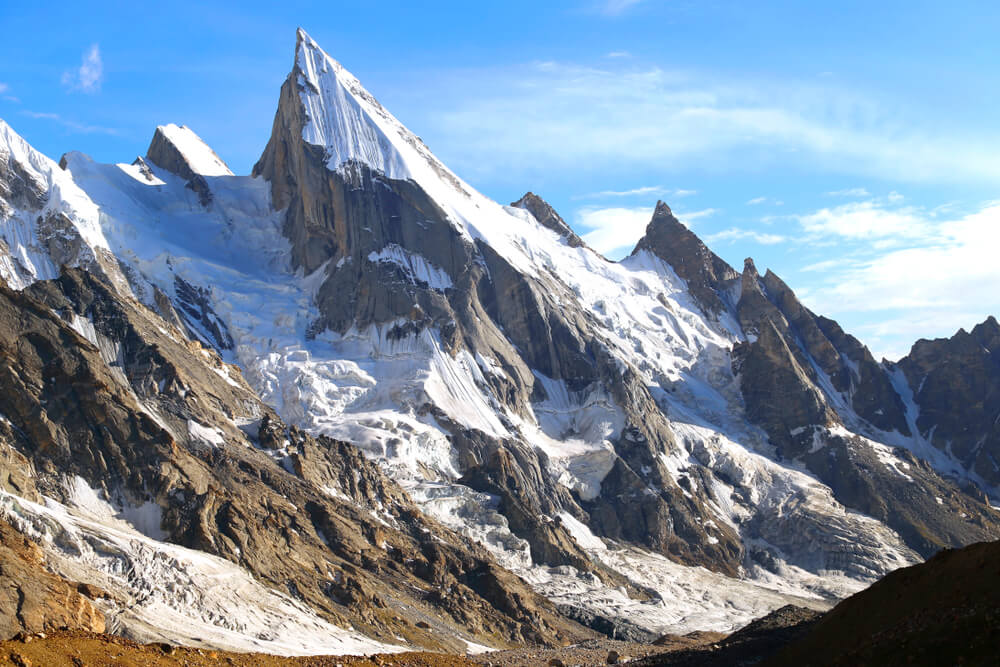
Some of the best hiking trails in Gilgit are Hussaini Bridge-Passu Glacier, Black Glacier Trail, and Rakaposhi Basecamp trail.
Take A Dip in Freezing Lakes
Well, if you’re brave enough and you’ve tried this before, only then can you go for a dip in those cold lakes of Gilgit Baltistan. These lakes are a must-see and a must-try experience.
Go For A Drive Along The Karakoram Highway
One of the most scenic highways in the world, the Karakoram highway is a true delight for anyone who loves road trips. This beautiful highway connects Pakistan to China, one of the most popular tourist attractions in Gilgit Baltistan.
Explore The Skardu Fort
The Skardu Fort or Kharphocho fort is a must-see for anyone visiting Gilgit Baltistan. This fort was built in the 8th century and is an excellent example of ancient architecture.
River Rafting in Skardu or Hunza
If you’re looking for an adrenaline-pumping activity, then river rafting is definitely for you. Skardu and Hunza are two of the best places for river rafting in Gilgit Baltistan.
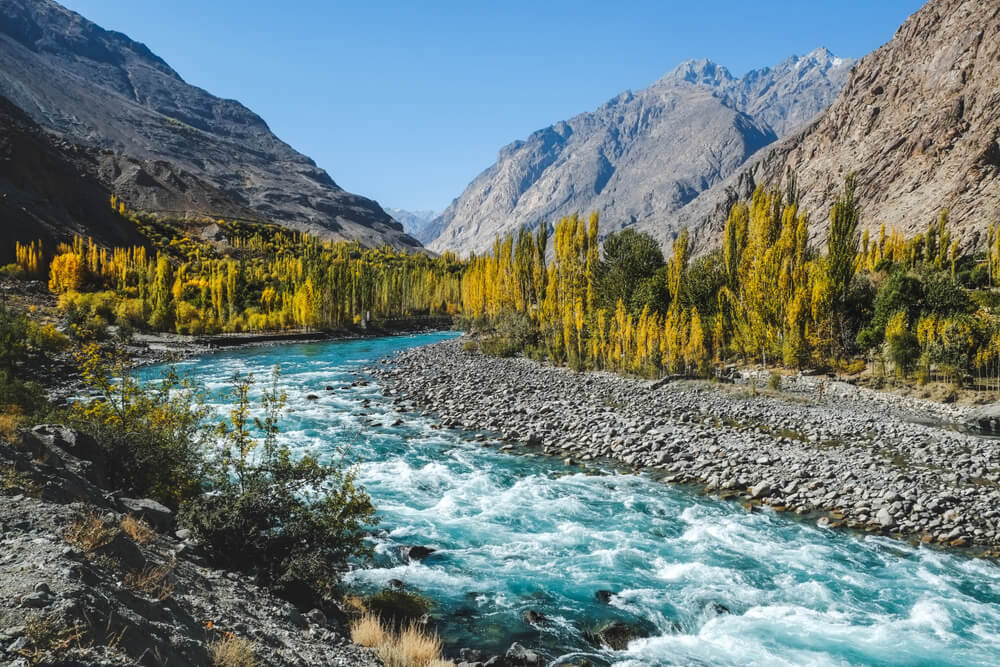
Spot Some Snow Leopards
If you’re a wildlife enthusiast, you’ll be happy to know that Gilgit Baltistan is home to some of the most majestic animals in the world.
One of these animals is the snow leopard. Snow leopards can be found in the mountainous regions of Gilgit Baltistan. Though it is rare to locate them, some lucky travelers may have sight of snow leopards.
Amenities For Tourists in Gilgit Baltistan
Gilgit Baltistan is a tourist-friendly destination with plenty of amenities for tourists. There are many hotels, resorts, and guest houses in Gilgit Baltistan that cater to the needs of tourists. There are also plenty of restaurants and cafes that serve delicious food. Moreover, many tour operators in Gilgit Baltistan can help tourists plan their trips.
But still, there’s lots of room for improvement as there isn’t much development regarding the infrastructure of tourist sites and the overall tourism industry in Gilgit Baltistan. Nevertheless, Gilgit Baltistan is beautiful, with many things to see and do here.
Places to Visit in Gilgit Baltistan
Pakistan is one of the few countries with a diverse landscape; there’s an abundance of rivers, lakes, glaciers, waterfalls, and springs.
Gilgit Baltistan is a famous spot for tourism in Pakistan and is surrounded by the highest and most significant number of mountains in the world.
Let’s look at what places you must visit when in Gilgit Baltistan.
Skardu at Gilgit Baltistan
Skardu is the largest town in Baltistan and serves as its administrative capital. It’s a place of extreme natural beauty with towering mountains, crystal clear lakes and rivers, glaciers, and verdant green valleys.
It’s in the extreme north of Pakistan and is a connecting point for the paths to the world’s highest mountains like K2, K3, and Gasherbrum.
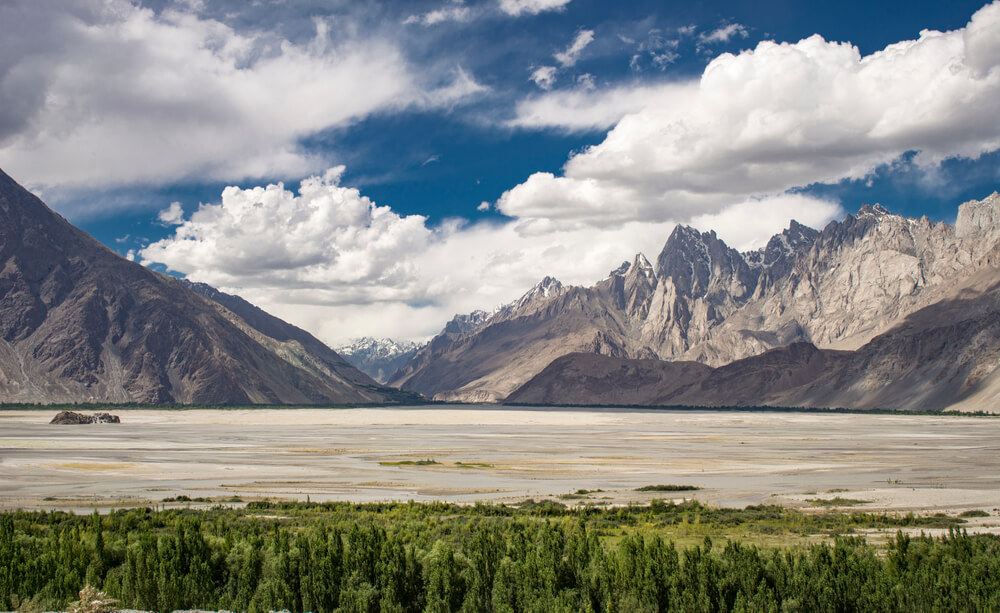
The people of Skardu are very hospitable, and you’ll find a rich culture and heritage here.
Some places you must visit in Skardu are Shangrila resort, Deosai Plains, and Shigar Fort.
Hunza Valley
On a 3 hours drive from Gilgit, there’s this heavenly mountainous valley of Hunza. It’s home to some spectacular snow-capped mountains, glaciers, and landscapes.
Baltit Fort, Attabad Lake, and Altit Fort are the most popular tourist attractions. People love to visit this place all year, but the best time to visit it lies between May and October.
Hunza valley has three regions, i.e., Upper Hunza Gojal, Lower Hunza, and Central Hunza.
Fairy Meadows at Gilgit Baltistan
Situated at the base of Nanga Parbat, Fairy Meadows is a small village within the Diamer district of Gilgit Baltistan.
The meadows get their name from the numerous fairies in these parts. It is a place of outstanding natural beauty surrounded by towering peaks on all sides.
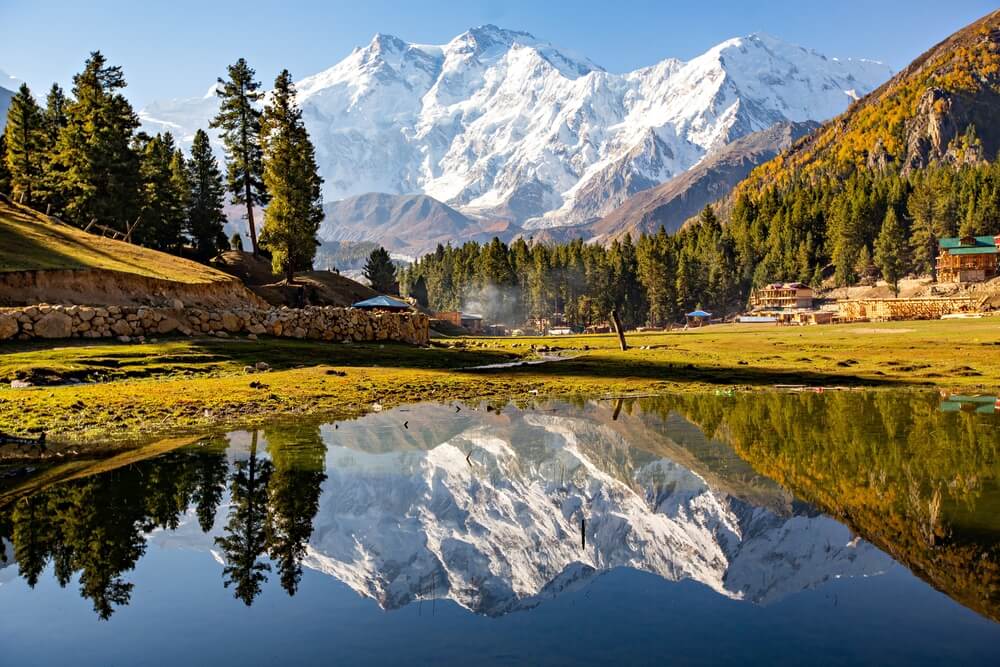
The best time to visit Fairy Meadows is from June to September when the weather is pleasant and the snow has melted, making it easier to access the village.
This place is only accessible by a 4×4 jeep or on foot and is considered a trekker’s paradise.
K2
K2, also known as Mount Godwin Austen, is the second-highest mountain peak in the world and the tallest in Pakistan. It is located in the Karakoram mountain range of Gilgit Baltistan.
K2 is known as Savage Mountain due to the extreme difficulty of ascent and the high number of fatalities associated with attempts to climb it.
It has an elevation of 28,251 feet (8,611 m) and is a perfect spot to enjoy the view of some of the world’s highest mountains.
Khunjerab Pass at Gilgit Baltistan
The Khunjerab Pass is a high mountain pass on the northern border of Pakistan with China. Its the highest paved international border crossing in the world, with an elevation of 4,693 meters.
It connects the Gilgit Baltistan region in the Pakistani-administered Kashmir with China’s Xinjiang Uyghur Autonomous Region.
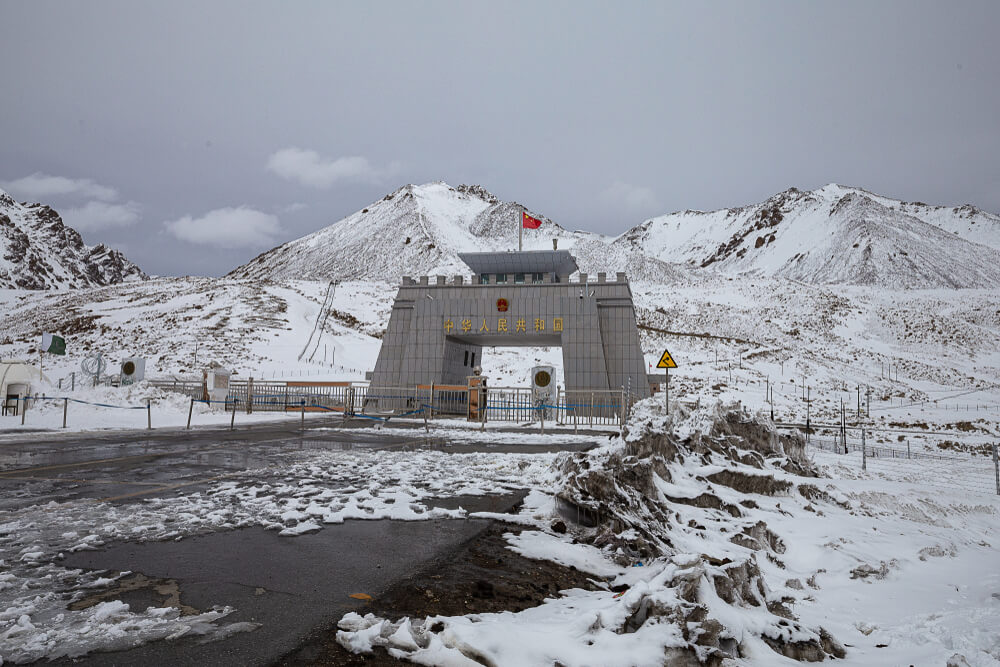
Due to its elevation, it’s advisable not to stay at this place for so long, and the best time to visit this spot is during the daytime. Don’t forget to bring warm clothes with you as it can get freezing.
The high-elevation pass has a lot of risks and is a difficult point to reach; you might face altitude sickness, weather concerns, steep road grade, and overall difficulty in getting there.
In the winter season, the pass gets closed from November 30 till May 1, so you have to choose your time accordingly.
Nanga Parbat at Gilgit Baltistan
Nanga Parbat, also known as the “Killer Mountain,” is the ninth-highest mountain peak in the world, with an elevation of 8,126 m. It is located in Gilgit Baltistan, Pakistan, and is part of the western end of the Himalayas.
Nanga Parbat is a rugged mountain to climb and has been nicknamed the “killer mountain” due to the high number of climbers who have died while trying to summit it.
The first successful ascent was not made until 1953; since then, there have been a handful of other successful upgrades.
If you’re looking for a challenge, and are an experienced climber, then Nanga Parbat is worth considering. Just be aware of the risks involved.
Attabad Lake
Attabad lake is another must-see in Gilgit Baltistan; it’s one of the most beautiful lakes in Pakistan. It was formed in 2010 when a landslide blocked the Hunza River, creating a massive lake of over 20 kilometers.
The Attabad Lake is a beautiful turquoise color and is surrounded by mountains. You can take a boat ride or hike in the lake.
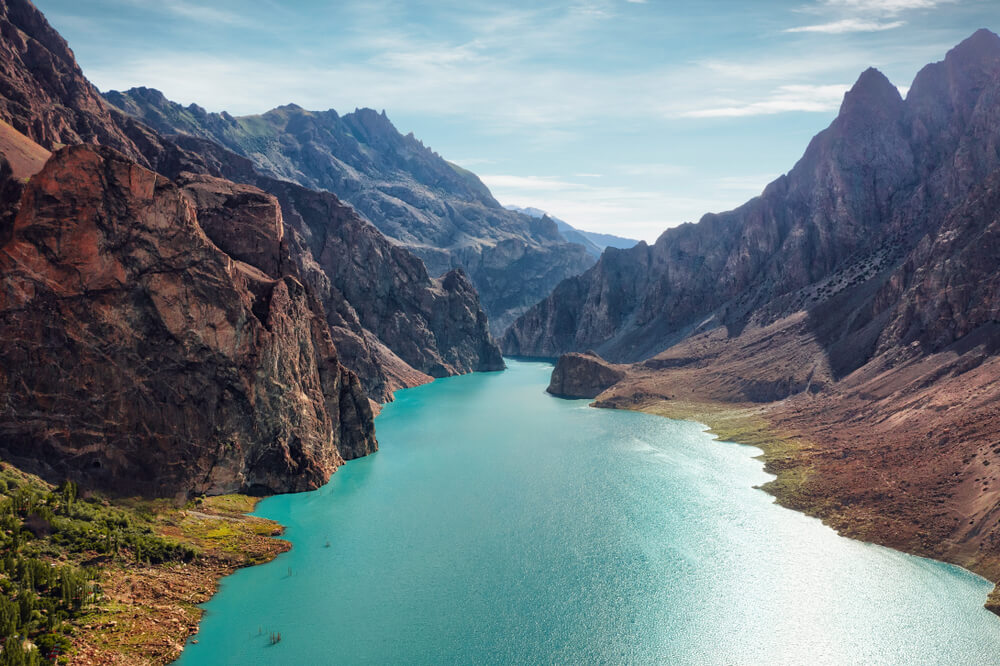
Thousands of visitors come to see this lake; thus, it has become one of the most popular tourist destinations in Gilgit Baltistan.
Naltar Valley at Gilgit Baltistan
The Naltar Valley is one of the most picturesque places in Gilgit Baltistan, 34 kilometers from the city of Gilgit. It’s a valley that is home to different colored lakes, as well as mountains and forests.
You can go hiking and camping in the Naltar Valley or take a jeep tour to see the different sights. In addition, the Naltar valley observes an international festival held at Naltar Ski Resort in the winter season.
The most famous lakes in this valley are Satrangi Lake, Dhudia lake, Blue Lake, and Halima Lake.
Rakaposhi
The Rakaposhi mountain is one of the most popular tourist attractions in Gilgit Baltistan. It is situated in the Nagar Valley and is about 7788 meters high.
You can go trekking to the Rakaposhi, and the best time for this hike is from June to September.
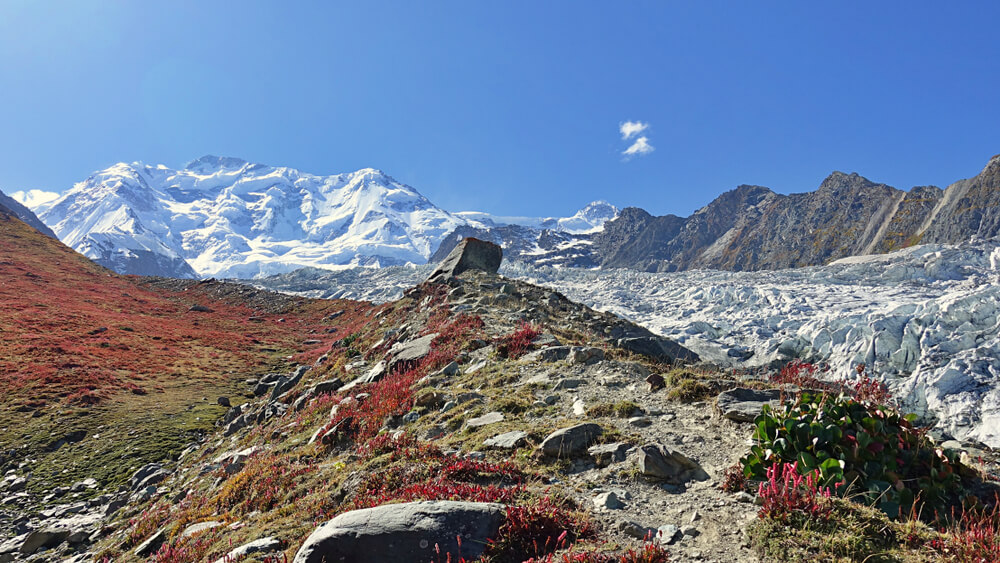
In the local language, “Rakaposhi” means the shining wall. The peak is the 27th highest in the world and the 12th highest in Pakistan, but it’s more famous for its magical beauty.
Minimarg
Minimarg, a scenic village in the Astore district of Gilgit-Baltistan, once served as an ancient route for trade between Gilgit and Srinagar.
The beautiful valley is located close to the ever-famous Deosai plains. This travel destination has gained lots of popularity in recent years because of the views it offers.
You can travel to Minimarg from Skardu through Chilas, which will take almost 6 hours. But the views are worth the effort.
The sunset in this valley is eye-catching, and the nights are colder than you can imagine, but the experience of camping under the stars is heavenly.
Deosai National Park at Gilgit Baltistan
Deosai National Park is one of the highest national parks in the world. It is a land of extremes where one can find some of the rarest animals on Earth. The plateau is located in between Skardu, Astore, and Kharmang valleys.
The park is located in the Himalayan region and is home to the brown bear, ibex, red fox, Tibetan wolf, weasel, and many more.

The best time to visit the park is from mid of June to August, when the Deosai plains are full of wildflowers, and the beauty over there is indescribable.
You can make the most of your visit by exploring the Deosai lakes, alpine meadows, and peaks.
Karimabad at Gilgit Baltistan
Karimabad, formerly Baltit, is a town in Gilgit Baltistan, Pakistan. It is the capital of Hunza Valley. The old town was founded in the 15th century. It is located at an elevation of 8,200 feet.
The town has a population of 16,000 as per the statistics of 1992. The main languages spoken in Karimabad are Burushaski, Wakhi, and Shina. The people of this valley are very hospitable and welcoming.
The main attractions in Karimabad are Baltit Fort, Altit Fort, Lady Finger, Passu Cones, and Rakaposhi.
Lady Finger
The lady finger peak, also known as Bublimotin or Bubli Mutin, is located in Gilgit Baltistan. It is one of the most popular trekking peaks in Pakistan. The elevation is 600 meters high and offers a stunning view of the surrounding mountains.
The Lady finger is an excellent place for rock climbing and mountaineering. It is also a popular destination for photographers and nature lovers.
Pack your bags and head to the lady finger peak for an unforgettable experience.
Passu Cones at Gilgit Baltistan
Passu is a village in Gilgit-Baltistan near Gulmit. The Passu cones are the mountain peaks in the Gilgit Baltistan region of Pakistan and offer a spectacular view from the Karakorum highway. The cones are shaped like cone-shaped mountains and are too steep-shaped that snow can’t sit on their peaks, thus known as hot mountains.
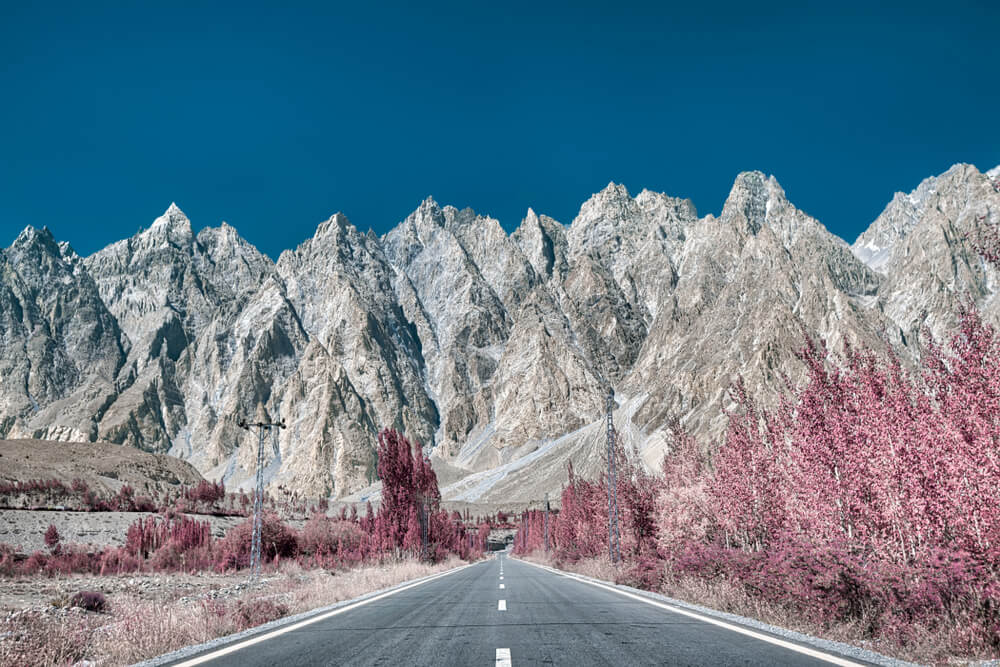
Passu village has always been a great tourist spot because of the gorgeous-looking Passu cones and the massive Passu sar mountain.
Astore Valleyat Gilgit Baltistan
The Astore valley is a beautiful place in the Astore district, Gilgit Baltistan region of Pakistan. The valley is known for its scenic beauty and breathtaking views and is on an elevation of 2600 m above sea level, a perfect spot to spend a day.
The Astore valley is a great place to visit for trekking, hiking, and mountaineering. There are many trails and mountains to explore in the valley.
The valley remains covered in snow from October to April, and the scenes mesmerize.
Rama
Rama valley is another treat to the eyes on your trip to Gilgit-Baltistan. It is situated in the Astore district and at an elevation of 3000 m above sea level. The valley is surrounded by high mountains and offers a stunning view of the Nanga Parbat peak.
The Rama lake is also a great attraction that offers stunning views of the mountains in its crystal clear waters and helps the visitors soothe and relax after a long hike.
There are thick pine, Juniper, and cedar forests, and the valley remains snow-clad for most of the year. Rama valley is an ideal place for camping, trekking, and mountaineering and can be a perfect place to spend a day or two on your vacation.
Baltit Fort at Gilgit Baltistan
The Baltit Fort is one of the most popular tourist attractions in Gilgit Baltistan. Located near Karimabad, this fort was built in the 8th century CE and has been on the UNESCO world heritage tentative list since 2004.
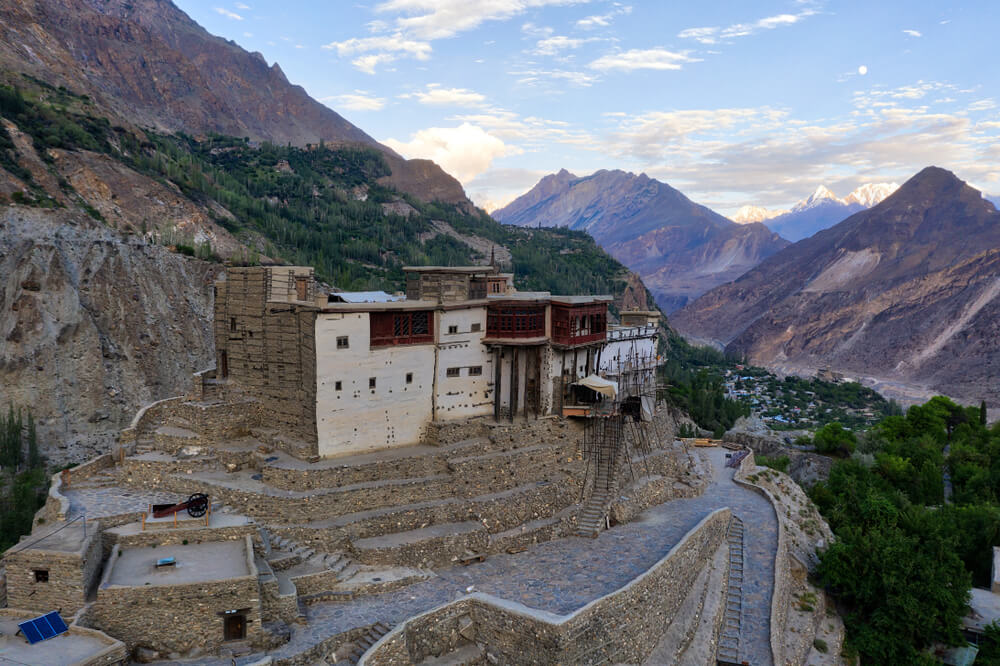
The fort has been restored and now houses a museum; it attracts thousands of visitors to Gilgit-Baltistan and has helped the local community regain their faith in their pride.
You can also enjoy stunning views of the city from the fort. It’s a must-visit on every tourist’s bucket list.
Karakoram
The Karakoram mountain range is one of the most popular tourist attractions in Gilgit Baltistan. It is home to some of the world’s highest mountains, including K2, the second-highest mountain.
It’s a part of complex mountain ranges at the center of Asia, including the Hindukush to the west and Pamirs to the northwest. This mountain range has the greatest concentration of the highest mountains and longest glaciers outside the high latitudes.
You can go trekking or mountaineering in the Karakoram range or enjoy the stunning views of the mountains.
Satpara Lake at Gilgit Baltistan
Satpara Lake is a beautiful freshwater lake located in the Skardu district at 2636 meters above sea level.
This beautiful lake is not only a tourist destination but also provides water to Skardu valley and is spread over an area of 2.5 square kilometers.
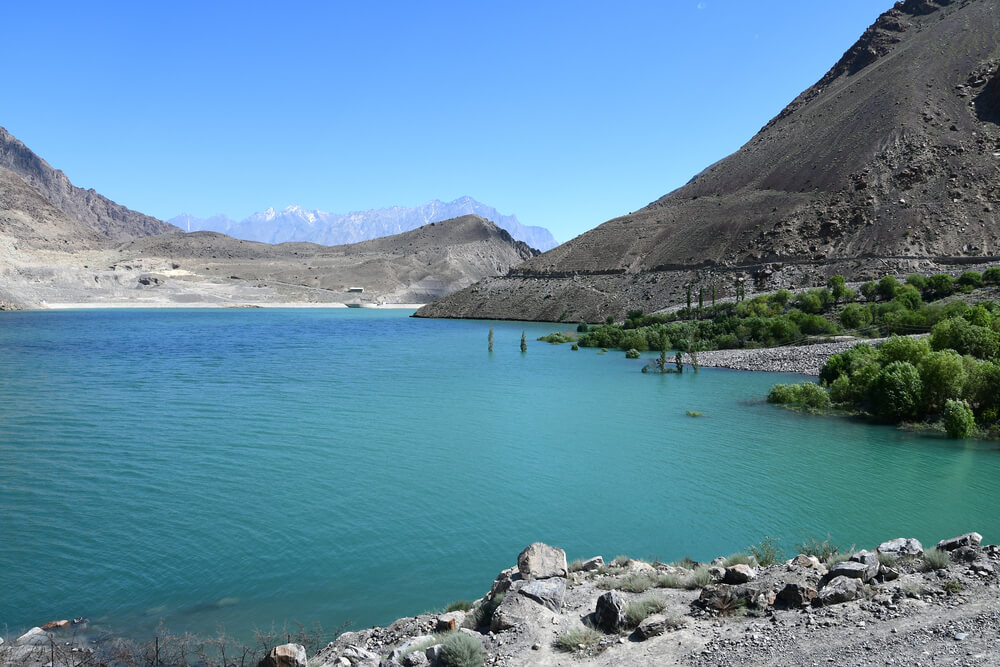
The lake is surrounded by picturesque mountains and offers stunning views. You can go for a swim, paddle in a boat, or enjoy the scenery.
Altit Fort at Gilgit Baltistan
Altit Fort is one of the oldest fortresses in Gilgit Baltistan. The rulers of Hunza built it in the 11th century.
The fort is located on a hilltop and offers stunning views of the Hunza Valley. You can also see the Altit village from here. Altit fort is another award-winning heritage site that got restored in 2007. Don’t forget to visit it on your trip to Gilgit-Baltistan.
Is Gilgit Baltistan Safe to Travel?
Gilgit Baltistan is a safe place to travel. There are no reports of crime or terrorism, and the people are friendly and welcoming. However, it is always wise to take precautions when traveling to any new place. Be cautious when traveling solo or in remote areas.
What is The Language of Gilgit Baltistan?
The official language of Gilgit Baltistan is Balti because it’s spoken in most parts of Gilgit Baltistan. However, the people also talk in Burushaski and Shina. In addition, most people also understand and speak Urdu.
How to Reach Gilgit Baltistan from Islamabad?
The best way to reach Gilgit Baltistan from Islamabad is by air. There are daily flights from Islamabad to Gilgit.
However, if you’re an adventure lover, you can opt to go by road. Traveling from Islamabad to Gilgit and Skardu is one of the most enjoyable journeys, as you’ll pass through scenic wonderlands and beautiful valleys.
There are two routes to travel by road from Islamabad to Gilgit Baltistan.
1) The first and most popular route is via the Karakoram Highway, also known as the friendship highway. It is the world’s highest paved international road which connects Pakistan with China. The journey from Islamabad to Gilgit Baltistan takes approximately 22 hours.
2) The second route is from Islamabad to Mansehra city of KPK, but from this route, you’ll be following a national highway named N15. You’ll pass through scenic spots like Naran, Kaghan valleys, and Babusar top of Gilgit-Baltistan.
Top Hotels To Stay
There are many top hotels in Gilgit Baltistan, depending on your budget and preferences. Some of the most popular hotels are:
1. Serena Shigar Fort Hotel
2. Luxus Hunza Attabad Lake Resort
3. Gilgit Serena Hotel
4. Fairyland Hotel
5. Riverdale Resort Gilgit
6. Duroyou Inn
These hotels are known for their top-notch facilities and luxury services. However, many mid-range and budget hotels are also available if you are looking for more affordable options. Therefore, you can easily find a hotel that suits your needs and budget.
Gilgit To Skardu Distance
The distance from Gilgit to Skardu is about 200 kilometers. The journey takes around 4-5 hours by road. You can also take a flight from Gilgit to Skardu, which takes about 50 minutes. Many flights are operating between these two cities.
Frequently Asked Questions
When Did Gilgit-Baltistan Get Independence?
The Independence Day of Gilgit-Baltistan is marked on November 1 every year. That was the day when the Gilgit Scouts got liberated their homeland from the Dogra Raj in 1947. But, unfortunately, they arrested Dogra Governor Ghansara Singh as well.
What is The Population of Gilgit?
The population of Gilgit is about 1.249 million, as per the calculations of 2013. The majority of the population is Shia Muslim.
Can You Visit Gilgit in Winter?
Yes, you can visit Gilgit in winter. The weather is cold in Gilgit during winter, but it is still possible to travel around and explore the city. However, you should pack warm clothes if you visit Gilgit in winter.
What is The Main City of Gilgit-Baltistan?
The main city of Gilgit-Baltistan is Gilgit. It is the region’s capital and the largest city in terms of population. Gilgit is a beautiful city located in the foothills of the Himalayas.
Does Gilgit Have Snow?
Yes, Gilgit has snow. The city experiences heavy snowfall during winter. That can make travel difficult, so it is essential to be prepared if you are planning to visit Gilgit during this time. Pack warm clothes, and have your winter tires on your vehicle.
Gilgit Baltistan, Pakistan, is a beautiful and culturally rich region of Pakistan. There are many places to visit and things to see in Gilgit Baltistan.
You can plan your trip to cover most of the sites in Gilgit because you’ll crave more when you see that place. So make sure to enjoy your trip.
Happy travels!
Individual Posts
-
Nanga Parbat – The Killer Mountain
-
Naltar Valley – A Scenic Valley in Pakistan
-
Khaplu – Tourist Destination in Northern Pakistan
-
K2 – The Second Highest Peak in The World
-
Hussaini Bridge – A Famous Yet Dangerous Bridge in Pakistan
-
Karakoram Highway – An Overview of The National Highway 35
-
Fairy Meadows – One of The Best Tourist Destination in Pakistan
-
Chilas – An Overview of Chilas Valley Pakistan
-
Shandur Pass – The Breathtaking Views from Shandur Top
-
Jaglot – Gateway of Gilgit and Skardu

